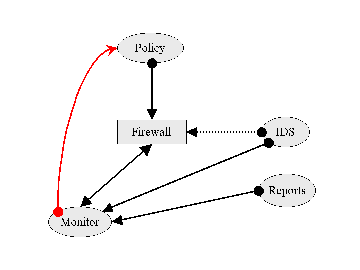A Firewall for Oxford
Neil J Long
University of Oxford Computing Services
neil.long@oucs.ox.ac.uk
Introduction
Once upon a time a Firewall equaled Security
Today a firewall is just one component in a toolkit of security techniques
and procedures
The Long Term Objective
- Decrease impact of external network attacks
- Minimise impact on normal user services and access
- Establish a Network Security Policy other than "wide open"

Why have a firewall?
- Enforce the Network Policy
- Impose some restrictions
- React to attacks
- Logging
The present situation
- Attacks from outside -> inside
- Attacks from inside -> outside
- Inside <-> inside
- Consequences for .ox.ac.uk
Why don't we have one already?
- Complexity of network topology
- Perceived impact on bandwidth
- No defined security policy
- Few 'disasters'
Disadvantages
- Obvious bottleneck - single point of failure
- Initially needs to be mainly open until key servers or services can be
identified
- Availability - staff vs equipment duplication
Affected Protocols
- No impact on internal traffic
- Firewall JANET link therefore only TCP/IP
- TCP, UDP, ICMP, Multicast, etc
- Cambridge have limited POP, IMAP and SMTP to specific hosts
More restrictive rules?
- Must have simple and few rules
- Local nets need to consider their own firewalls for greater restrictions
- Will not reduce the need to keep up with patches and awareness
Conclusions
- Oxford needs a firewall - needs a POLICY!
- Initially 'mostly open'
- Eventually 'mostly closed'
- Bandwidth, latency and backbone topology define selection criteria
- No panacea for system administration
